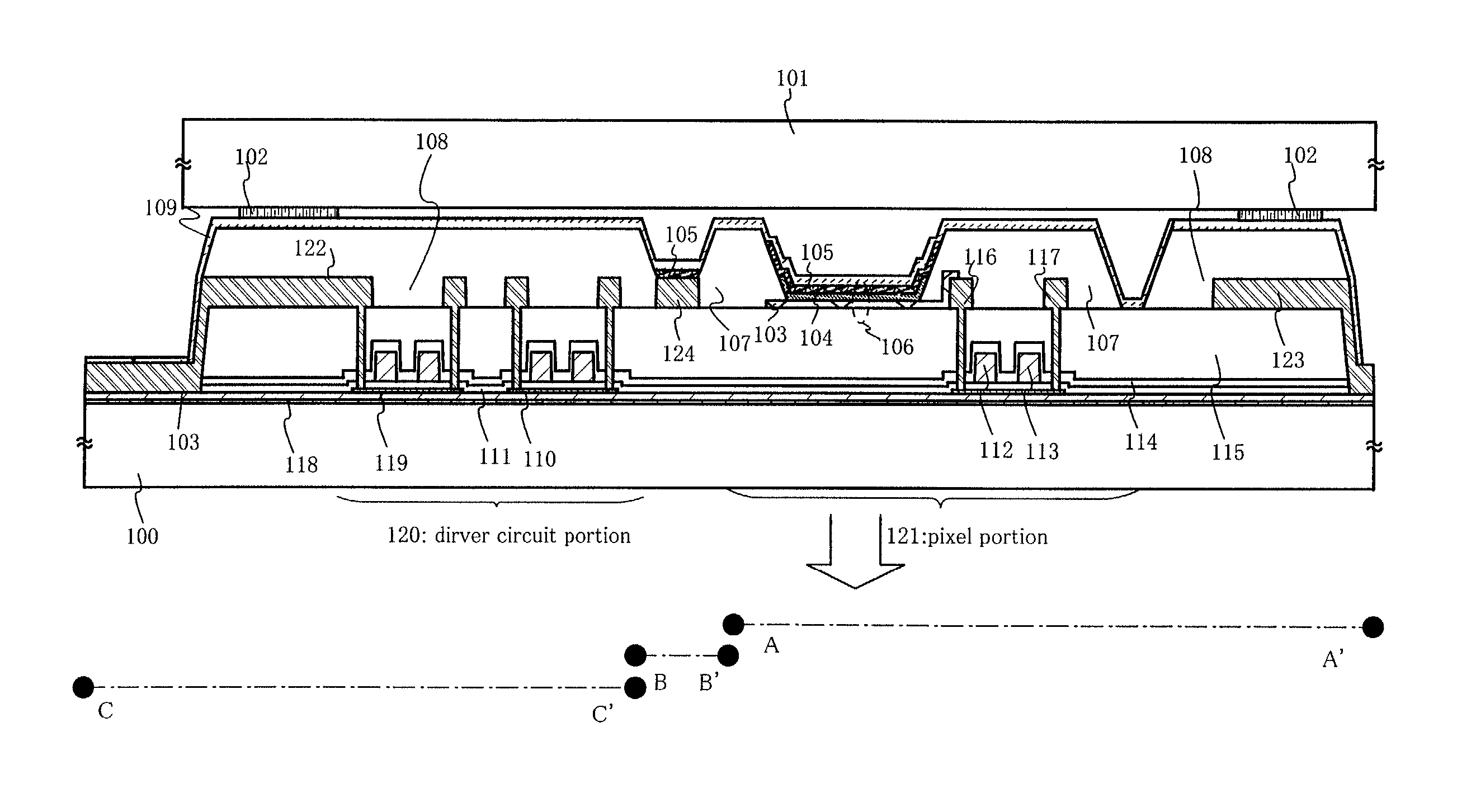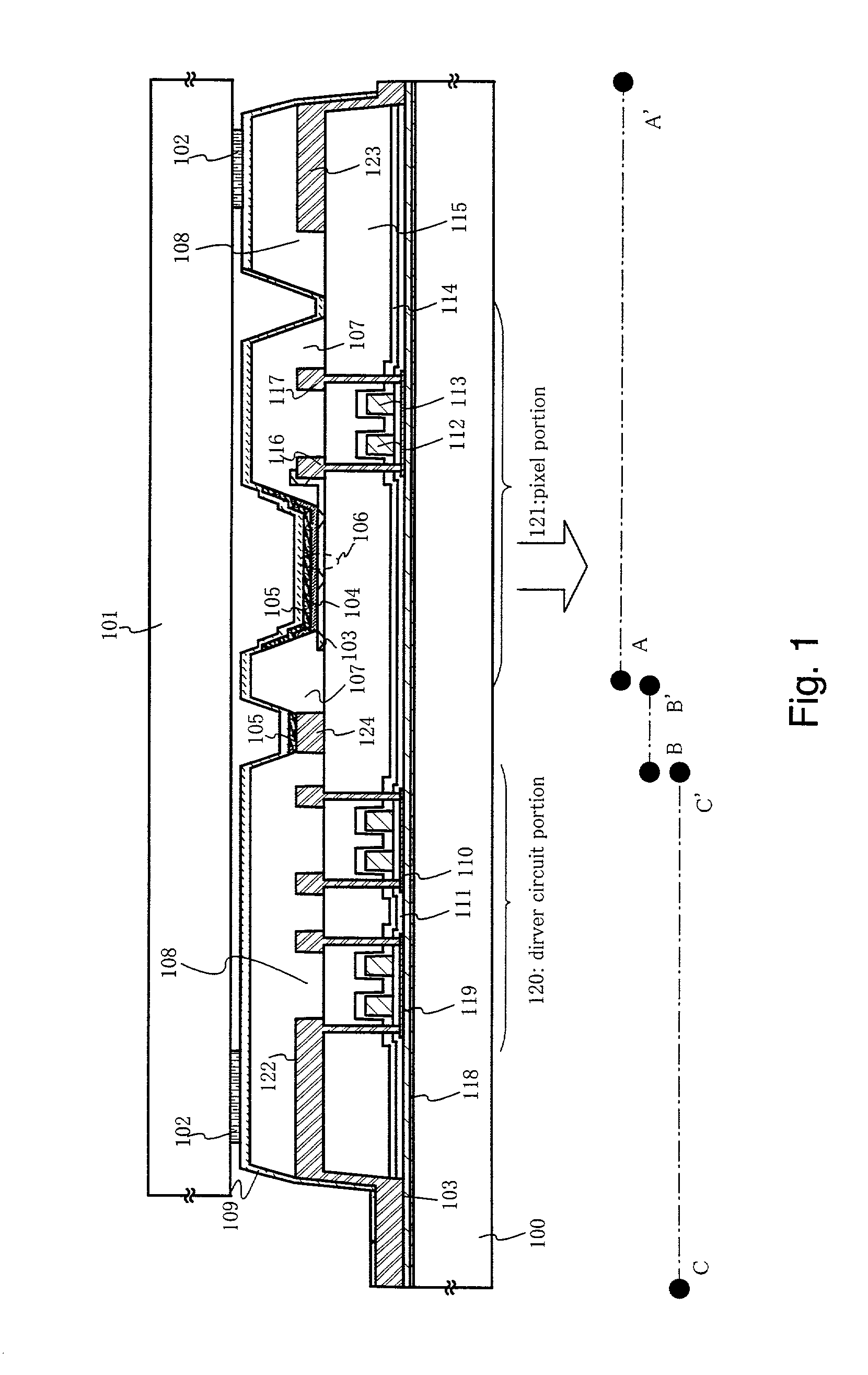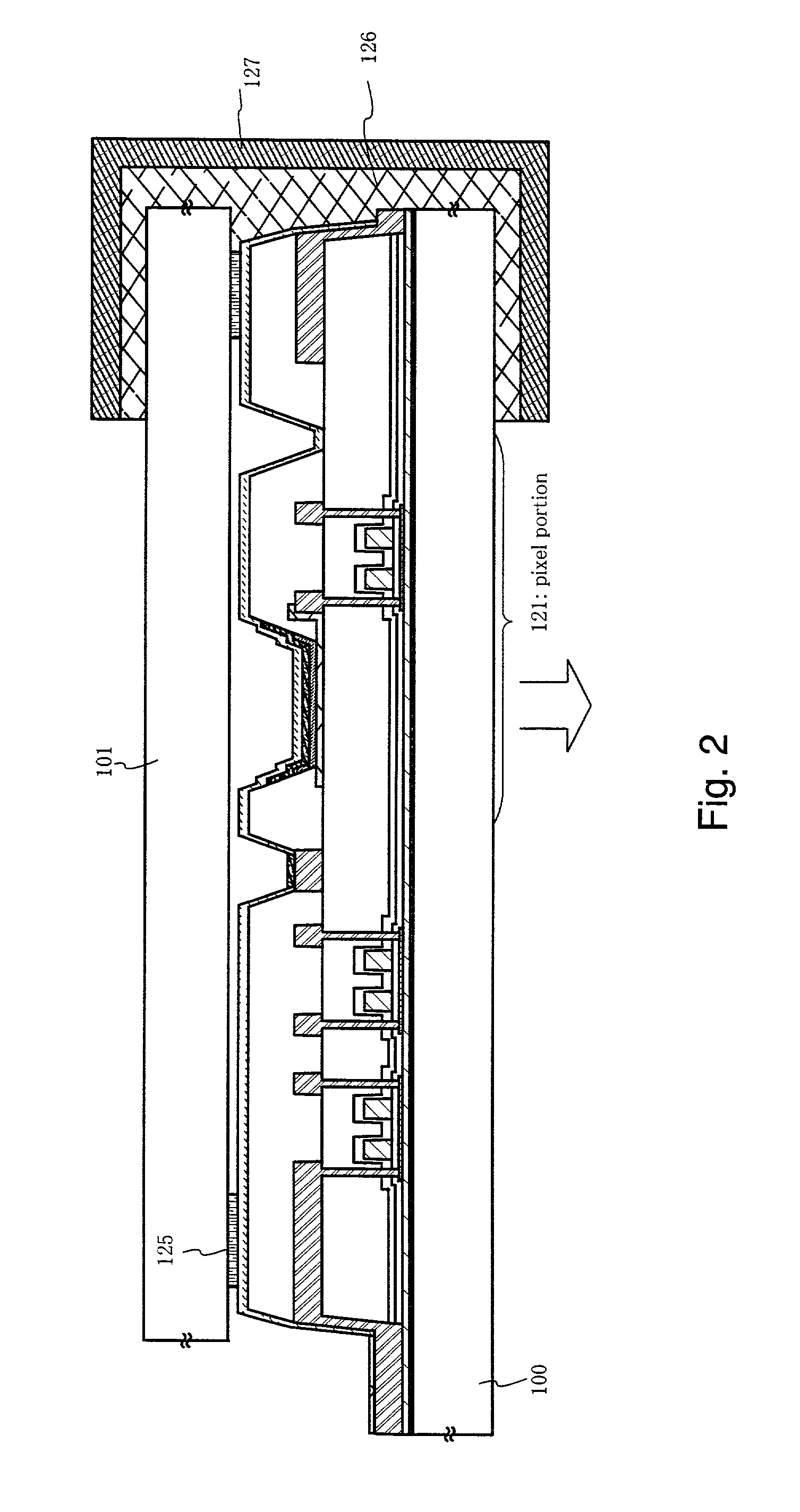Display device and method of manufacturing the same
a technology of light-emitting elements and display devices, which is applied in the direction of organic semiconductor devices, semiconductor devices, instruments, etc., can solve the problems of increasing the number of dark spots, reducing the display quality, and deteriorating phenomena of organic light-emitting elements
- Summary
- Abstract
- Description
- Claims
- Application Information
AI Technical Summary
Problems solved by technology
Method used
Image
Examples
embodiment 1
[0117] (Embodiment 1)
[0118] The present invention is applicable to any display devices using the organic light5 emitting element. FIG. 10 shows an example of such display devices, illustrating an active-matrix display device manufactured by using TFTs. The TFTs in Embodiments are sometimes classified into amorphous silicon TFTs and polysilicon TFTs, depending on the material of a semiconductor film forming a channel formation region. The present invention is applicable to either of them if the channel formation region has a sufficiently high mobility.
[0119] An n-channel type TFT 431 and a p-channel type TFT 432 are formed in a driving circuit portion 437. A TFT 433 for switching, a TFT 434 for reset, a TFT 436 for current control and a storage capacitor 435 are formed in a pixel portion 438.
[0120] As a substrate 401, a substrate made of glass such as quartz, barium borosilicate glass as is represented by #7059 glass and #1737 glass manufactured by Corning Inc., or alumino borosilica...
embodiment 2
[0139] (Embodiment 2)
[0140] In Embodiment 2, mother substrates (mother glasses), the area of each mother substrate corresponding to the total area of a plurality of unit panels, are bonded to each other. When the mother substrates are cut into individual panels, a CO.sub.2 laser is used as cutting means.
[0141] A CO.sub.2 laser employs carbon dioxide as a reactive medium, and is operated by exciting carbon dioxide to be in an inverted population state. Since the CO.sub.2 laser generates light having a wavelength in an infrared region (10.6 nm), the object irradiated with laser light can be heated.
[0142] A method of cutting a glass substrate using a CO.sub.2 laser will be described with reference to a perspective view of FIG. 14. FIG. 14 is a perspective view showing a method of cutting a glass substrate 501 irradiated with laser, of the glass substrates 501 and 502 that are bonded to each other. An ellipsoidal laser beam spot 503 is radiated onto the glass substrate 501 moving in the...
embodiment 3
[0145] (Embodiment 3)
[0146] A light-emitting device formed by implementing the present invention can be incorporated to various electric-equipment, and a pixel portion is used as an image display portion. Given as such electronic equipment of the present invention are cellular phones, PDAs, electronic books, video cameras, lap-top computers, and image play back devices with the recording medium, for example, DVD (digital versatile disc), digital cameras, and the like. Specific examples of those are shown in FIGS. 12A to 13C.
[0147] FIG. 12A shows a cellular phone, which is composed of a display panel 9001, an operation panel 9002, and a connecting portion 9003. The display panel 9001 is provided with a display device 9004, an audio output portion 9005, an antenna 9009, etc. The operation panel 9002 is provided with operation keys 9006, a power supply switch 9007, an audio input portion 9008, etc. The present invention is applicable to the display device 9004.
[0148] FIG. 12B shows a m...
PUM
 Login to View More
Login to View More Abstract
Description
Claims
Application Information
 Login to View More
Login to View More - R&D
- Intellectual Property
- Life Sciences
- Materials
- Tech Scout
- Unparalleled Data Quality
- Higher Quality Content
- 60% Fewer Hallucinations
Browse by: Latest US Patents, China's latest patents, Technical Efficacy Thesaurus, Application Domain, Technology Topic, Popular Technical Reports.
© 2025 PatSnap. All rights reserved.Legal|Privacy policy|Modern Slavery Act Transparency Statement|Sitemap|About US| Contact US: help@patsnap.com



